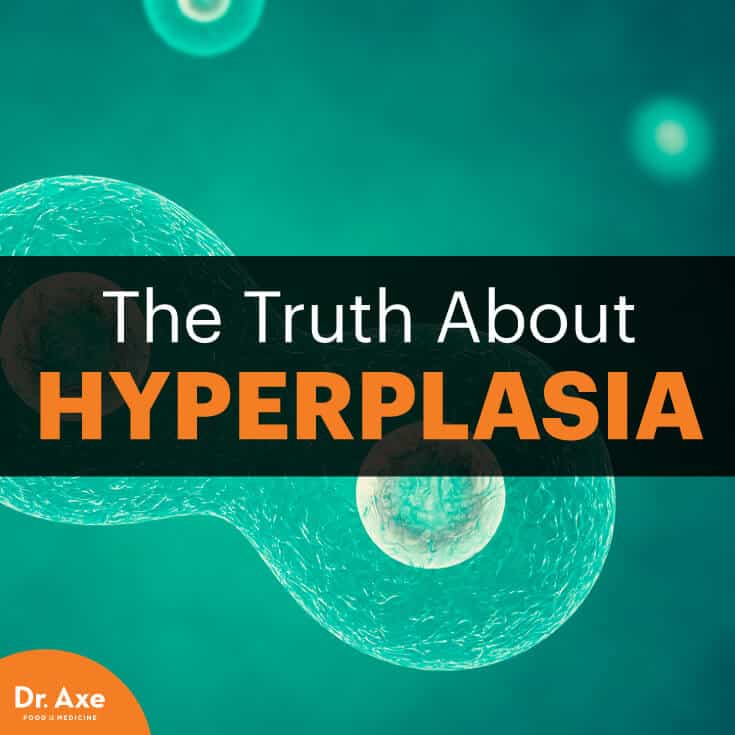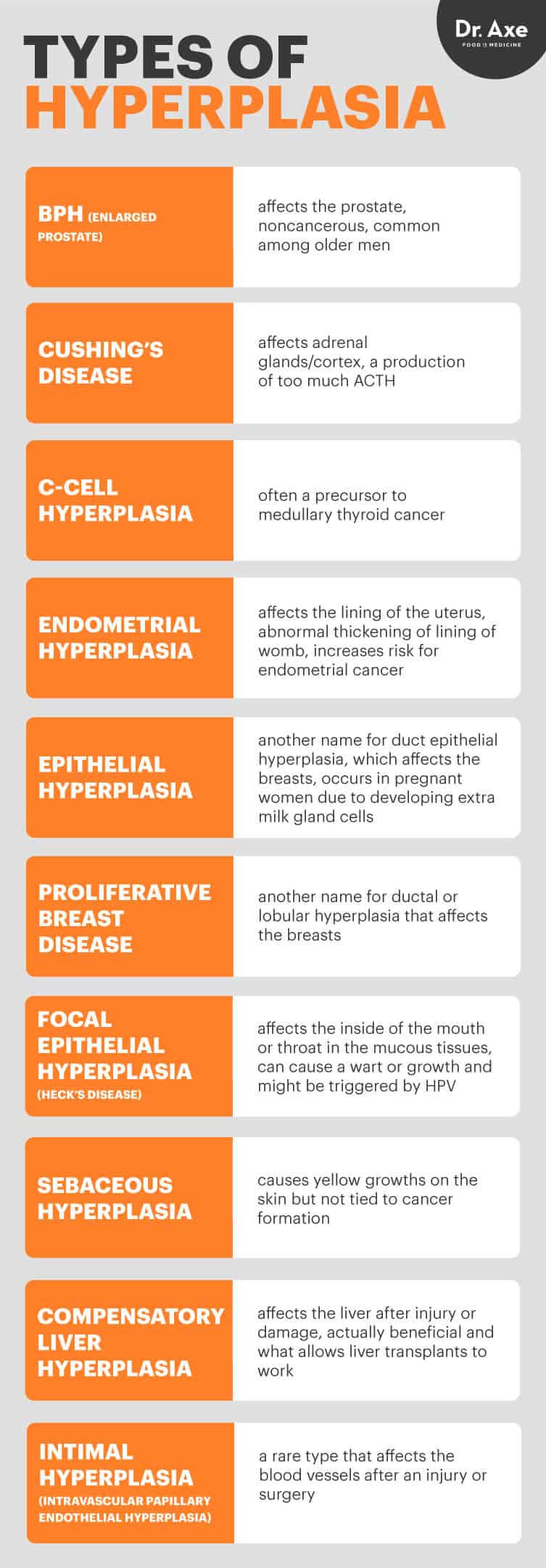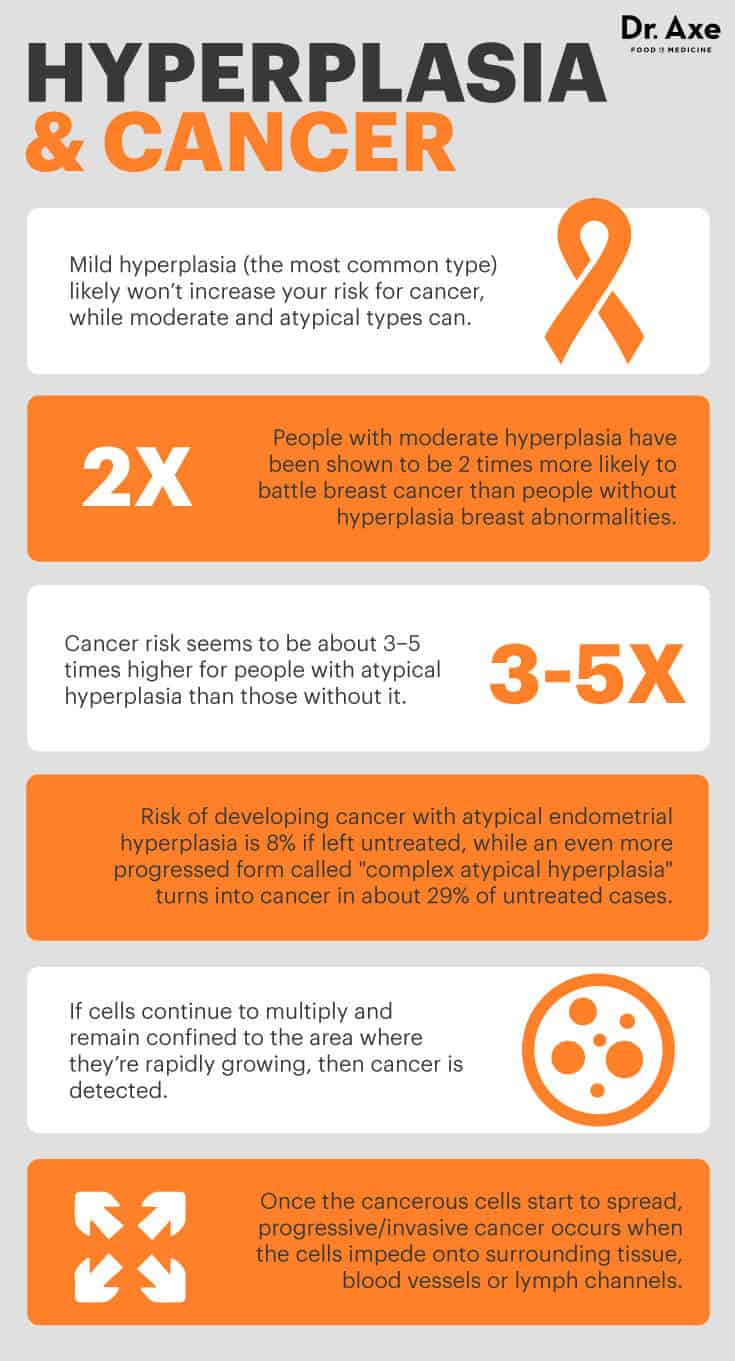This Dr. Axe content is medically reviewed or fact checked to ensure factually accurate information.
With strict editorial sourcing guidelines, we only link to academic research institutions, reputable media sites and, when research is available, medically peer-reviewed studies. Note that the numbers in parentheses (1, 2, etc.) are clickable links to these studies.
The information in our articles is NOT intended to replace a one-on-one relationship with a qualified health care professional and is not intended as medical advice.
This article is based on scientific evidence, written by experts and fact checked by our trained editorial staff. Note that the numbers in parentheses (1, 2, etc.) are clickable links to medically peer-reviewed studies.
Our team includes licensed nutritionists and dietitians, certified health education specialists, as well as certified strength and conditioning specialists, personal trainers and corrective exercise specialists. Our team aims to be not only thorough with its research, but also objective and unbiased.
The information in our articles is NOT intended to replace a one-on-one relationship with a qualified health care professional and is not intended as medical advice.
Hyperplasia: Separating Fact from Fiction & How to Treat It
May 10, 2016

There is a lot of information out there about hyperplasia — some accurate and some not so accurate. It sure sounds like a scary term, but does that mean it actually is in all cases?
Well, it certainly can be. Hyperplasia, also sometimes called hypergenesis, is a condition characterized by an abnormal overgrowth of cells, which can occur in various parts of the body— including the prostate, breasts and uterus. Because it’s the result of an increased rate of cell reproduction, it’s sometimes the initial stage in the development of cancer (although not always) and can also cause enlargement of certain organs.
However, not every type is cancerous or even harmful. In fact, certain forms are completely normal and even beneficial in some ways (these types are considered physiologic). (1) For example, hyperplasia of the liver allows us to heal from even extensive liver damage. Studies show that up to 75 percent of someone’s liver can be scarred, but that person can still fully recover due to the effects of hyperplasia. (2) And when someone gets sick, his or her tonsils might undergo hyperplasia in order to boost production of cells that fight the threatening virus or bacteria.
However, pathologic forms can contribute to cancer and other illnesses. Epithelial/ductal hyperplasia and endometrial hyperplasia are two commonly diagnosed pathologic forms of this condition. Epithelial hyperplasia is when cells overgrow in the lining of the ducts of the milk glands (called lobules), which can sometimes increase the risk for breast cancer. Endometrial hyperplasia is another common type that can develop into endometriosis or cancer, which affects the endometrium, the lining of a woman’s uterus.
The good news is there are several ways to naturally treat this condition. Read on to find out how, along with the symptoms, causes and different types of hyperplasia you should be aware of.
Natural Hyperplasia Treatments
Doctors use many different methods to help treat hyperplasia depending on what’s causing it and how it’s affecting various body parts. Sometimes hormone replacement therapy is used — such as progesterone cream or hormones given orally, topically as a vaginal cream, in an injection or with an intrauterine device — while in other cases require removal of an organ.
Treatment also depends on someone’s age and medical history — for example, if that person plans to become pregnant in the future or is done bearing children. In older adults, it’s more common to remove affected growths, tumors or even entire organs (such as the uterus in the case of a hysterectomy or a liver transplant) if the risks are high for hyperplasia developing into cancer.
No matter how specific cases are managed, certain natural therapies can help make treatment more effective. Natural therapies can either be used by themselves in some cases or in conjunction with conventional medical treatments to support the body in the healing process. They’re also extremely helpful for preventing hyperplasia and reducing risk for cancer naturally. For instance, studies suggest that 30 percent to 40 percent of all kinds of cancer can be prevented with a healthy lifestyle and dietary measures. (3)
To help prevent and treat cases of hyperplasia and the various symptoms it can cause, here are tips for improving immune function and reducing levels of inflammation (the root of most diseases):
1. Balance Hormones
Your diet and lifestyle play a big part in regulating hormone levels, including estrogen and testosterone. For example, new research shows that your gut health plays a significant role in hormone production and that inflammatory conditions like leaky gut syndrome, which affects the lining your intestinal wall, can contribute to autoimmune reactions and many other problems with your immune system. However, balancing hormones with synthetic hormones can raise risks. Research shows that even though hormone therapy might help control symptoms of PMS or menopause, they can increase the odds of developing cancer of the reproductive organs. (4)
Some of the ways you can help balance hormones naturally include consuming healthy fats (aim for a variety of foods high in short-, medium- and long-chain fatty acids), exercising, reducing exposure to toxins and chemicals, reaching and maintaining a healthy weight, getting good sleep, managing stress levels, and using adaptogen herbs (a unique class of healing plants that promote hormone balance and protect the body from a wide variety of diseases and stressors).
2. Eat an Anti-Inflammatory Diet
A diet to reduce the inflammation that can trigger hyperplasia includes plenty of cancer-fighting foods, such as:
- leafy green vegetables (and fresh veggie juices)
- cruciferous vegetables
- fresh fruit, especially berries
- brightly colored fruits and veggies that are red, orange and yellow
- fresh herbs and spices
- organic meats that are pasture-raised/grass-fed
- wild-caught fish
- healthy fats, including olive oil, avocado, nuts, seeds and coconut oil
- probiotic foods, including yogurt, kombucha, cultured veggies and kefir
On the other hand, foods that increase inflammation and hyperplasia or cancer risk include:
- Sugar
- Refined oils
- Refined carbohydrates
- Conventional dairy products
- Farm-raised meats
In the case of helping to treat cancer naturally, the Gersen Diet is one protocol that has been effective for many people. The Gerson Diet consists of eating only organic fruits, vegetables and sprouted ancient grains; detoxifying with the use of coffee enemas; consuming vegetable juices multiple times daily along with beef liver for added nutrients; and taking beneficial supplements. This diet is very high in vitamins, minerals and enzymes but low in fats, proteins and sodium, which makes nutrients easy to metabolize and can help increase immune function.
3. Supplements
There are supplements you can take help treat this condition as well, including the following:
- Vitamin C: an antioxidant that lowers free radical damage, which can trigger hyperplasia
- Vitamin D: helps regulate hormones and immune functioning; optimize your natural vitamin D3 production by getting 20 minutes of sun exposure every day, exposing 40 percent of your body to the sun between 10 a.m. and 2 p.m.
- Milk thistle, dandelion root and chelation therapy: boost the body’s detoxification methods and help improve health of the liver
- Turmeric/curcumin: an anti-inflammatory that helps kill cancer cells and stop tumor growth
- Medicinal mushrooms: help shrink tumors, boost the immune system and make the body more protective against effects of stress
- Frankincense oil: helps lower inflammation, boosts your genes’ healing properties, and can reduce cancerous cell production and tumor growth (5)
4. Exercise
Getting regular exercise does more than increase muscle strength and help keep you at a healthy weight. It can also increase your life span, fortify your immune system against cancer and heart disease, protect your brain and boost cognitive functioning, reduce stress, and help you get better sleep. Theories suggest that these benefits of exercise are due to a boost in immunity and increased removal of toxins, viruses and bacteria, all of which can trigger inflammation, hormonal imbalances and illnesses.
5. Reduce Stress
Many studies have shown that stress can lower immune function, raise inflammation and contribute to numerous diseases. There’s evidence that people with lower stress levels tend to live longer and have added protection against heart disease and cancer.
Research studies suggest that there are benefits to stress-reducing practices like healing prayer, maintaining mental peace, mindfulness guided meditation, spending time in nature and fostering close relationships. Whatever works for you to relieve stress, focus on living a lifestyle filled with peace and joy as much as possible.

Different Types of Hyperplasia
Physiologic cases of hyperplasia are normal, benign (noncancerous) and even serve important roles. Most of us experience some type of normal hyperplasia at some points during our lives — for example, muscle tissue sometimes experiences temporary hyperplasia after exercise, which allows muscles to grow back bigger and stronger. Pathologic types are illness-related, however, and not only contribute to cancer in some cases, but also to hormonal imbalances, infertility, thyroid disorders and other issues.
Depending on what type someone has, the condition can go by many different names:
- Benign prostatic hyperplasia (BPH): noncancerous and affects the prostate, which is also known as prostate enlargement. It’s believed to be common among older men but not harmful in most cases
- Cushing’s disease: affects adrenal glands/adrenal cortex; this occurs when the adrenal cortex makes too much of the hormone ACTH (adrenocorticotropic hormone)
- C-cell hyperplasia: often a precursor to medullary thyroid cancer
- Endometrial hyperplasia: affects the lining of the uterus; this might be caused by excess estrogen stimulation, reproductive disorders like polycystic ovary syndrome or taking synthetic female hormones; this type forms an abnormal thickening of the lining of the womb, and women who have it are more likely to develop endometrial cancer (6)
- Epithelial hyperplasia: another name for duct epithelial hyperplasia, which affects the breasts, there are two primary types of hyperplasia that affect the breasts called “usual ductal hyperplasia” (increased amount of cells are produced in the breast ducts, but this isn’t believed to contribute to breast cancer) and “atypical ductal hyperplasia” (abnormal pattern of growth is seen that is associated with an increased risk of developing breast cancer). Pregnant women typically experience hyperplasia in the breast ducts due to developing extra milk gland cells
- Proliferative breast disease: another name for ductal or lobular hyperplasia that affects the breasts
- Focal epithelial hyperplasia (also known as Heck’s disease): affects the inside of the mouth or throat in the mucous tissues; can cause a wart or growth and might be triggered by the human papillomavirus (HPV)
- Sebaceous hyperplasia: causes yellow growths on the skin but not tied to cancer formation
- Compensatory liver hyperplasia: affects the liver after injury or damage; this is actually beneficial and even what allows liver transplants to work
- Intimal hyperplasia: a rare type that affects the blood vessels after an injury or surgery; also called intravascular papillary endothelial hyperplasia
Symptoms of Hyperplasia
Signs and symptoms vary a lot depending on what type of hyperplasia someone has. Many types can go undetected for a period of time due to showing no symptoms (like in the breast, for example), but other forms might cause symptoms, including:
- pain near an enlarged organ (such as the liver)
- changes in the skin
- digestive issues
- fatigue
- menstrual problems: abnormal uterine bleeding (heavier than usual bleeding between periods) or having a menstrual cycle shorter than 21 days
- Cushing’s disease can cause symptoms like weight loss, nervousness, bugling eyes and irregular periods
- Cutaneous lymphoid hyperplasia causes noticeable reddish-brownish nodules on the skin
Hyperplasia doesn’t usually cause a tumor or lump to grow that’s big enough to be detected when looking at someone or even large enough to be felt when performing a self-exam. However, it’s capable of causing certain organs to become enlarged, growths to form in the mouth or on the skin, warts to develop, and a number of other symptoms/complications. Overgrowth of cells associated with this condition is usually diagnosed using tests like a mammogram or biopsy (a small amount of tissue is removed to be checked under a microscope). (7)
Treatment of symptoms depends on what part of the body the disease affects, how far it has progressed and the patient’s medical history (such as if he or she has had cancer, reproductive problems or liver damage before). Certain types are riskier than others and tied to an increased risk of developing cancer, including atypical hyperplasia of the breasts or endometrial hyperplasia of the uterus, so these cases need to be carefully monitored by a doctor. Patients with these forms usually need frequent mammograms, sonograms or other tests, and might even need to use medication to help control hyperplasia progression.
Causes of Hyperplasia: How It Develops
Hyperplasia results from an abnormal increase in cell counts but not usually an increase in the actual size of the cells (which is called hypertrophy). In most cases when someone has the condition, the affected cells still appear normal under a microscope — there are just a higher amount of them compared to someone without this condition. However, it’s also possible for someone to have both hyperplasia and hypertrophy (enlargement of cells) at the same time.
Depending on the type, causes and risk factors can include:
- hormonal imbalances (for example, abnormal estrogen dominance can contribute to endometrial hyperplasia)
- obesity or being overweight (8)
- inflammation caused by factors like a poor diet, sedentary lifestyle, toxin exposure
- excessive alcohol drinking, smoking cigarettes and using other drugs
- being over the age of 35 (9)
- if you’re a woman having a history of menstrual irregularity — for example, starting periods early or menopause late
- having a family history of hyperplasia conditions and cancer, including uterine, breast, prostate, colon or ovarian cancers
- having pre-existing medical conditions, including diabetes, polycystic ovary syndrome, gallbladder disease or thyroid disease
Hyperplasia and Cancer Risk
Certain types of hyperplasia can increase your risk for developing cancer, but not all do. It’s usually categorized as being mild, moderate or atypical. While mild hyperplasia (the most common type) likely won’t increase your risk for cancer, moderate and atypical types can.
For example, some research shows that people with moderate (also called usual) hyperplasia are up to two times times more likely to battle breast cancer than people without hyperplasia breast abnormalities. As for atypical hyperplasia, cancer risk seems to be about three to five times higher than in cases where no hyperplasia exists. In the case of endometrial hyperplasia, if you have atypical hyperplasia the chances of cancer developing are about 8 percent if left untreated, while an even more progressed form called “complex atypical hyperplasia” turns into cancer in about 29 percent of untreated cases.
This condition usually begins when normal cell development and growth becomes disrupted, causing an overproduction of cells that can sometimes start to stack upon one another. Cells might start to begin to take on an abnormal appearance and become more tightly packed together. If cells continue to multiply and remain confined to the area where they are rapidly growing, then cancer is detected. Once the cancerous cells start to spread, progressive/ invasive cancer occurs when the cells impede onto surrounding tissue, blood vessels or lymph channels. (10)

Can Hyperplasia Help Contribute to Muscle Growth?
One situation in which hyperplasia might actually benefit you is when it impacts muscle fibers. Research suggests that it can contribute to the strength and growth of muscles by increasing production of muscle cells. Most people think of “hypertrophy” as causing muscle growth — which in this case is the increase in the size of muscle cells that results from resistance training and fighting gravity — but it seem in some cases hyperplasia also plays a part. Studies suggest that it might contribute to muscle development by splitting up pre-existing fibers and then activating “satellite cells” near the muscle fiber, which can turn into muscle fiber themselves. (11)
However, there is limited research at this time regarding how much of an affect hyperplasia has on muscle growth and how it differs from person to person. Some studies have found that people who practice strength training experience significant hyperplasia as a result, while others studies have found that subjects don’t show the same reactions. Because studies have found mixed effects on muscle strength, the belief remains that hyperplasia is possibly a contributor to muscle growth but likely not in every person and only under some conditions.
Hyperplasia Takeaways
- Hyperplasia has been linked to cancer development in many cases, but some forms can actually be beneficial in certain circumstances. This is why it’s important to know what type and to what degree you have, along with the effects and how to treat your specific condition.
- There are several different forms and several symptoms, including pain near an enlarged organ, changes in the skin, digestive issues, menstrual problems, weight loss, nervousness, bulging eyes, irregular periods and reddish-brown nodules on the skin.
- Risk factors and causes include hormonal imbalances, obesity or being overweight, inflammation, a poor diet, sedentary lifestyle, toxin exposure, being over 35 years old, a history of menstrual irregularity, family history of hyperplasia and/or cancer, and pre-existing medical conditions like diabetes, PCOS, gallbladder disease and thyroid disease.
- Some ways to naturally treat it include balancing hormones, eating anti-inflammatory foods, supplementing, exercising and reducing stress.








